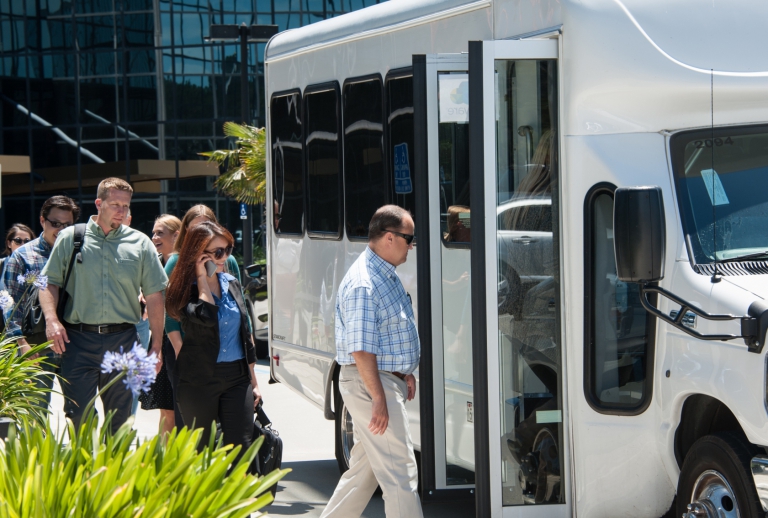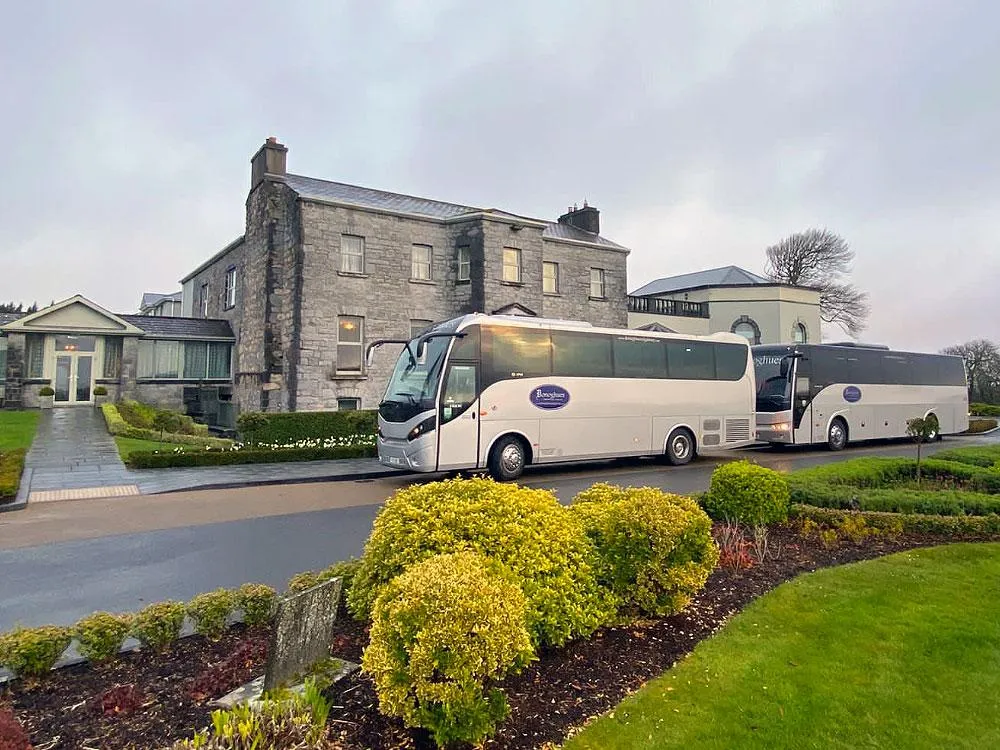20 Pro Suggestions For Choosing Event Transportation Sites
20 Pro Suggestions For Choosing Event Transportation Sites
Blog Article
Ten Most Important Tips To Help Pick The Ideal Shuttle For Your Staff.
Here are 10 excellent tips on how to choose the right vehicle size and capacity when it comes to shuttle services for employees.
1. Review the transportation needs of employees
To begin start, you must conduct an exhaustive analysis of your employees to determine how many of them will be using the shuttle regularly. You should consider factors such as the employee base, shifts during work, and peak usage hours. These information can help you figure out the capacity of your vehicle and ensure that the shuttles can manage a range of numbers.
2. Select the Right Vehicle type
Select the vehicle best suited to your shuttle service, based on how many employees you employ and what their needs are. Vans or minibuses are viable alternatives. Minibuses that are able to maneuver through tighter spaces and are perfect for smaller groups, are the best choice. However larger buses will be ideal for those who have to transport a lot of people. Check the layout to see if it offers comfortable seating, as well as enough space to store luggage.
3. Evaluate Fuel Efficiency
Fuel costs can have a significant impact on the budget allocated for shuttle services. It is important to consider fuel efficient vehicles when choosing vehicles to minimize operating expenses. Also, consider hybrid or electric vehicles as well, because they are more durable and offer savings over the long run. It is important to compare the efficiency of each model in order to make an informed choice which balances capacity and cost.
4. Be aware of accessibility features
Make sure that the vehicles you choose to use are compliant with accessibility standards in order to accommodate employees with disabilities. This includes features such the wheelchair lift or low floor that makes accessibility easier and a seating area for people with disabilities. Providing accessible transport is not just in compliance with legal requirements and promotes an inclusive working environment.
5. Plan for Growth & Flexibility
As businesses change and grow their workforce size will also change. Take into consideration the possibility of future growth when choosing a vehicle. When selecting vehicles, consider the potential for growth in the future.
6. Check out the safety ratings and features.
When it comes to employee transportation safety is of utmost importance. Research the safety rating of the vehicle and its features before you buy it. Take into consideration vehicles with modern technology, such as antilock brake and stability control as well as collision avoidance systems. Also, ensure whether all safety regulations are met by the vehicle, to protect employees during travel.
7. Assess Maintenance and reliability
Choose vehicles that are renowned for their low maintenance cost and dependability. If your vehicle requires frequent repairs may hinder shuttle operations or lead to employee frustration. To prolong the life of your car, you should look into reliability and maintenance schedules for every model and make.
8. Make use of GPS as well as Fleet Management Software
Implementing GPS and fleet management software will increase the efficiency of your shuttle service. These tools provide real-time tracking of vehicles, allowing the most efficient routes to be developed based on the weather conditions or schedules of employees. In addition, the software for managing fleets allows you to monitor the vehicle's performance, maintenance and the use of fuel. This will ensure that your vehicles are used efficiently.
9. Employ feedback mechanisms for employees
Encourage your employees to provide feedback about vehicle comfort and capacity by completing surveys or submitting suggestions boxes. Understanding their experiences can assist in identifying any issues related to overcrowding, seating comfort, or accessibility. Monitoring feedback from passengers will assist in making the necessary modifications to vehicle choices or services to ensure a positive travel experience.
10. Budget the total cost of Ownership
Consider the total cost to own (TCO) when selecting vehicles. This includes the purchase price and fuel costs along with maintenance, insurance, and depreciation. TCO analysis allows you to make educated decisions that balance initial costs with operating expenses over the long-term. It is possible to make educated decisions by considering all costs associated. This can help you select a car that meets your financial requirements while ensuring reliability and capacity.
These tips can help you select the most suitable vehicles for your shuttle service for employees and also manage its capacity. You will be able to provide a relaxing and safe service. Read the most popular employee transportation info for more recommendations including airport pickup, airport rides, car service to airport, san airport shuttle, dallas airport shuttle to hotels, service shuttle, airport shuttle to airport, lax airport shuttle bus, shuttle bus, transport to airport and more.
10 Tips For The Route Planning And Efficiency Of A Corporate Event Transportation Service
Here are 10 strategies to help you plan your route and increase the efficiency of corporate transportation for events:
1. Examine the Locations of Attendees and Locations
Begin by collecting the details about where your guests are expected to be. This can be done with registration forms, or RSVPs with addresses or general locations. By understanding the geographic distribution of attendees it's possible to plan routes that are convenient and reduce travel times.
2. Make use of Route Optimization Software
Incorporating route optimization software can assist in determining the most effective routes through analyzing the patterns of traffic, road conditions and other factors. These software tools can help you identify the fastest paths, help avoid congested areas and suggest alternatives when needed. Utilizing technology to design routes can significantly enhance efficiency overall.
3. Plan for Peak Traffic Times
If you are planning transportation, think about the peak hours of traffic. Examine historical traffic statistics to find out when congestion most often occurs in the areas surrounding the venue. To avoid delays, adjust shuttle schedules in order to ensure attendees arrive on-time and without waiting.
4. Establish Multiple Pickup Points
To improve convenience and decrease travel time, establish multiple pick-up points based on attendee locations. This can include hotels and public transport hubs and other places that are popular for gatherings. You can reduce travel distances and improve efficiency of transportation by offering multiple pickup points.
5. Create a transportation Schedule
Prepare a thorough schedule for transport that includes the times of departure and arrival along with estimated travel times for each route. Distribute the schedule prior to the event to all participants to make sure they know of the time when their shuttles are scheduled to arrive. A well-organized transportation schedule keeps the service running smoothly while making it easier for people to navigate.
6. Incorporate Buffer Times
You should add buffer time to your travel schedule to be able to handle unexpected delays caused by traffic jams or bad weather. Allowing additional time between pickups and drops will reduce the chance that guests miss important events due to issues with transportation.
7. Track Real-Time Traffic Updates
Use real-time traffic monitoring tools during the day of the event to alter routes automatically. Having the option to reroute shuttles is an excellent way to ensure efficiency. It also helps ensure that attendees get to their destination in a timely manner.
8. Name a Transportation coordinator
Choose a dedicated shuttle coordinator who is responsible for the service. The coordinator will handle the logistics, interact with drivers and address any issues quickly. The designated person will assure the efficient and smooth operation of the transportation system.
9. How to communicate with attendees
Inform attendees of any changes to the transportation program including shuttle schedules. Mobile applications, SMS messages as well as printed material are effective methods of communicating with attendees.
10. Get Feedback Post-Event
After the event you should have attendees share their thoughts about their transportation experience. You can ask questions about the effectiveness of the transportation routes, the timing of shuttles, and general satisfaction. Reviewing this feedback can assist in identifying the strengths and weaknesses in the transportation plan, which will allow to improve the efficiency of future events.
These tips help companies plan routes and increase efficiency of corporate event transportation. Planning the route correctly does not just ensure that the guests arrive on time, but it also helps to create a positive event impression that reflects positively on the organization that hosts the event. Planning is vital to ensure that corporate events are successful. Check out the top get more info for event transportation for site advice including luxus transportation, transport logistics company, manager transport, us transport, manager transport, logistics near me, transport manager job, global logistics co, transport services near me, transport services near me and more.